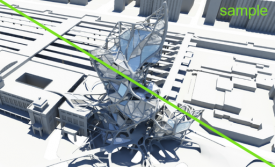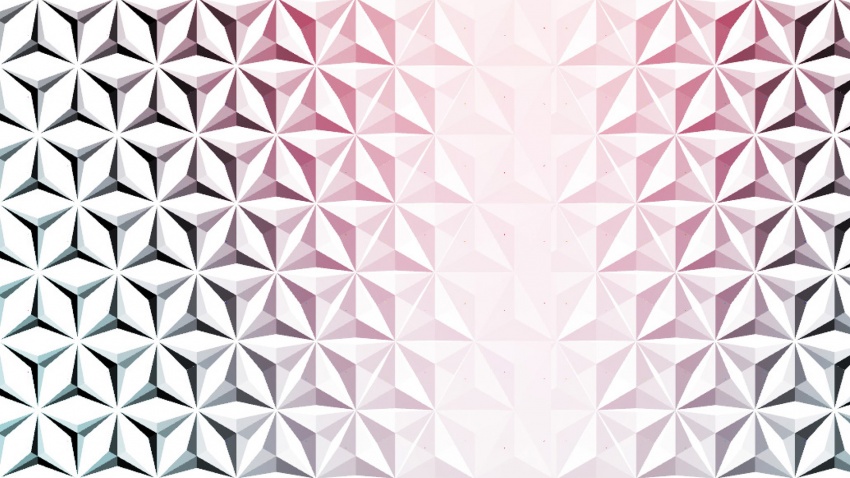|
|
| Line 9: |
Line 9: |
| | ===Group 6: Opening=== | | ===Group 6: Opening=== |
| | | | |
| − | ==Introduction== | + | ==Introduction: Interactive Cladding System== |
| − | Lorem ipsum dolor sit amet, consectetur adipiscing elit. Ut ac lobortis nibh. Sed et lectus et dolor convallis sagittis id a sem. Nulla interdum nunc et urna hendrerit at pellentesque risus convallis. Proin a turpis nunc, eu tincidunt arcu. Etiam magna turpis, facilisis id placerat et, congue eu nisi. Vivamus euismod nulla id elit laoreet placerat eu eu nisi. Morbi id libero quam, nec rhoncus diam.
| + | Group 6 is: |
| | + | Mallika Aurora, |
| | + | Wessel van Beerendonk, |
| | + | Mikal Papez, |
| | + | Sarah Roberts, |
| | + | Leon Spikker, |
| | + | Marvin Valk. |
| | + | |
| | + | These interactive maneuverable components can be |
| | + | assembled in a range of scales to provide location-specific |
| | + | shading, privacy, and produce light at night. Components |
| | + | are independently controlled to open and close |
| | + | according to different levels of light throughout the day. |
| | + | |
| | | | |
| | [[Image: Group6 Presentation Page 02.jpg |850px]] | | [[Image: Group6 Presentation Page 02.jpg |850px]] |
| Line 19: |
Line 32: |
| | [[Image: Group6 Presentation Page 03.jpg |850px]] | | [[Image: Group6 Presentation Page 03.jpg |850px]] |
| | | | |
| − | ==Cell== | + | ==Single Cell Logic== |
| − | Lorem ipsum dolor sit amet, consectetur adipiscing elit. Ut ac lobortis nibh. Sed et lectus et dolor convallis sagittis id a sem. Nulla interdum nunc et urna hendrerit at pellentesque risus convallis. Proin a turpis nunc, eu tincidunt arcu. Etiam magna turpis, facilisis id placerat et, congue eu nisi. Vivamus euismod nulla id elit laoreet placerat eu eu nisi. Morbi id libero quam, nec rhoncus diam.
| + | |
| | + | 1. Establish the vertices of an equilateral triangle, the |
| | + | midpoints of its edges and its centroid. |
| | + | 2. Establish vector category A - form the edge midpoints |
| | + | to the centroid |
| | + | 3. Establish vector category B - form the vertices to the |
| | + | centroid |
| | + | The principle is that the vertices move along vector category |
| | + | B, as much as the edge midpoints move along |
| | + | vector category A, as much as the centroid moves upwards |
| | + | along the z – direction. So a single slider controls |
| | + | all these translations |
| | + | 4. Establish planar surfaces along the fold Lines |
| | | | |
| | [[Image: Group6 Presentation Page 10.jpg |850px]] | | [[Image: Group6 Presentation Page 10.jpg |850px]] |
| Line 26: |
Line 51: |
| | <br> | | <br> |
| | | | |
| − | ==Organ== | + | ==Multiple Cell Logic== |
| − | Lorem ipsum dolor sit amet, consectetur adipiscing elit. Ut ac lobortis nibh. Sed et lectus et dolor convallis sagittis id a sem. Nulla interdum nunc et urna hendrerit at pellentesque risus convallis. Proin a turpis nunc, eu tincidunt arcu. Etiam magna turpis, facilisis id placerat et, congue eu nisi. Vivamus euismod nulla id elit laoreet placerat eu eu nisi. Morbi id libero quam, nec rhoncus diam.
| + | |
| | | | |
| | + | 1. Draft Surface to tessellate |
| | + | 2. Divide the surface into a triangulated pattern |
| | + | Each triangle becomes a subsurface, to which |
| | + | the single Panel script may be applied |
| | + | 3. To control an incremental ‘swarm-like’ distributed |
| | + | pattern of panel folding that may be based on variable |
| | + | parameters of sunlight or motion sensing across the |
| | + | surface, introduce the ‘Random’ (grafted output) component |
| | + | to the slider controlling the motion translation. |
| | <br> | | <br> |
| | | | |
| | ==Body== | | ==Body== |
| − | Lorem ipsum dolor sit amet, consectetur adipiscing elit. Ut ac lobortis nibh. Sed et lectus et dolor convallis sagittis id a sem. Nulla interdum nunc et urna hendrerit at pellentesque risus convallis. Proin a turpis nunc, eu tincidunt arcu. Etiam magna turpis, facilisis id placerat et, congue eu nisi. Vivamus euismod nulla id elit laoreet placerat eu eu nisi. Morbi id libero quam, nec rhoncus diam.
| + | Range of Scales |
| | + | The components can be fabricated in a range of scales |
| | + | for various uses. At vary large scales, the cells can even |
| | + | form a passageway large enough for humans, or Darth |
| | + | Vadar. |
| | | | |
| | [[Image: Group6 Presentation Page 04.jpg |850px]] | | [[Image: Group6 Presentation Page 04.jpg |850px]] |
Group 6: Opening
Introduction: Interactive Cladding System
Group 6 is:
Mallika Aurora,
Wessel van Beerendonk,
Mikal Papez,
Sarah Roberts,
Leon Spikker,
Marvin Valk.
These interactive maneuverable components can be
assembled in a range of scales to provide location-specific
shading, privacy, and produce light at night. Components
are independently controlled to open and close
according to different levels of light throughout the day.
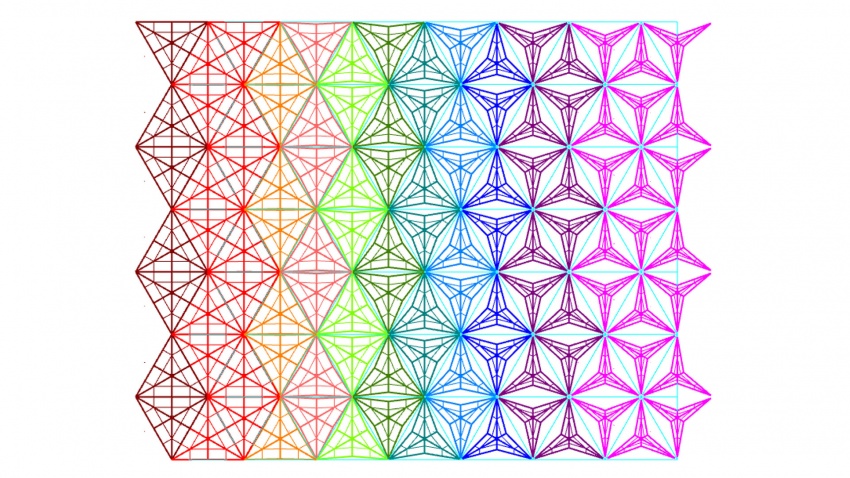
Concept
Lorem ipsum dolor sit amet, consectetur adipiscing elit. Ut ac lobortis nibh. Sed et lectus et dolor convallis sagittis id a sem. Nulla interdum nunc et urna hendrerit at pellentesque risus convallis. Proin a turpis nunc, eu tincidunt arcu. Etiam magna turpis, facilisis id placerat et, congue eu nisi. Vivamus euismod nulla id elit laoreet placerat eu eu nisi. Morbi id libero quam, nec rhoncus diam.
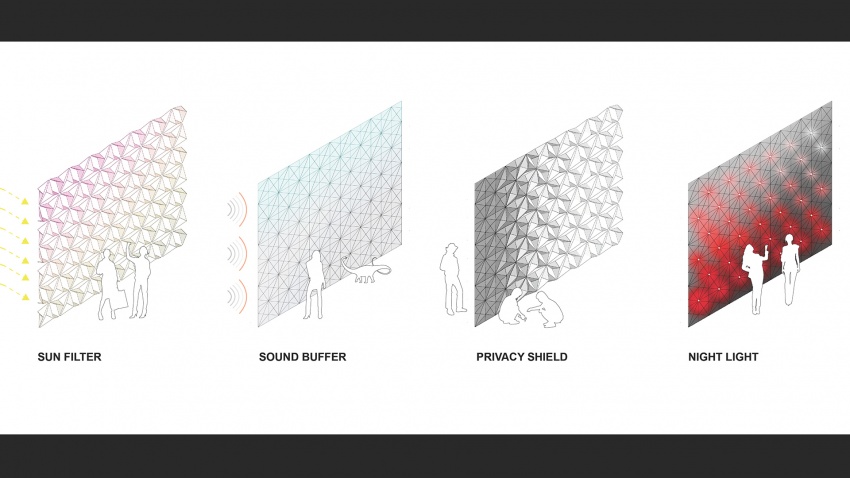
Single Cell Logic
1. Establish the vertices of an equilateral triangle, the
midpoints of its edges and its centroid.
2. Establish vector category A - form the edge midpoints
to the centroid
3. Establish vector category B - form the vertices to the
centroid
The principle is that the vertices move along vector category
B, as much as the edge midpoints move along
vector category A, as much as the centroid moves upwards
along the z – direction. So a single slider controls
all these translations
4. Establish planar surfaces along the fold Lines
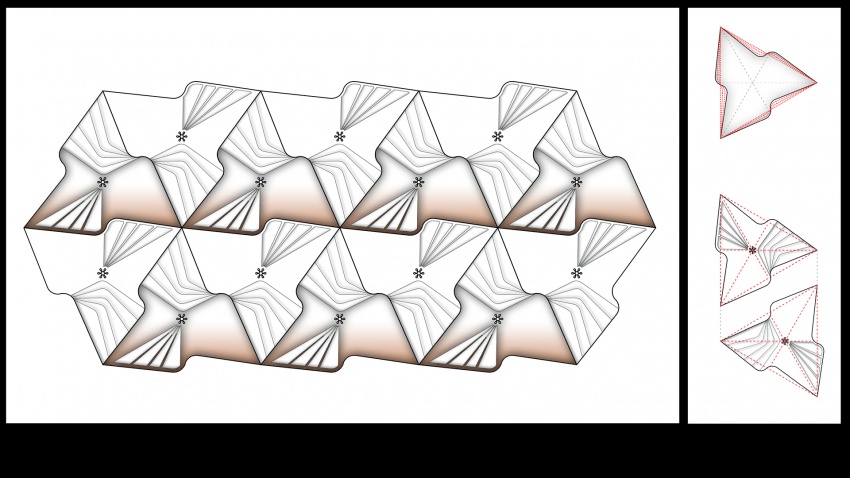
Multiple Cell Logic
1. Draft Surface to tessellate
2. Divide the surface into a triangulated pattern
Each triangle becomes a subsurface, to which
the single Panel script may be applied
3. To control an incremental ‘swarm-like’ distributed
pattern of panel folding that may be based on variable
parameters of sunlight or motion sensing across the
surface, introduce the ‘Random’ (grafted output) component
to the slider controlling the motion translation.
Body
Range of Scales
The components can be fabricated in a range of scales
for various uses. At vary large scales, the cells can even
form a passageway large enough for humans, or Darth
Vadar.
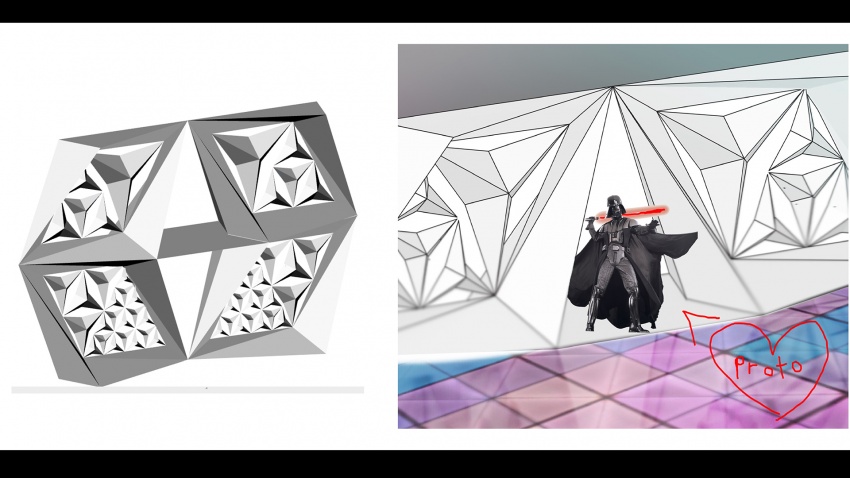
Presentation
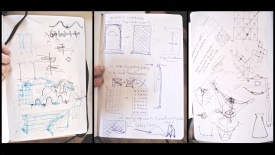
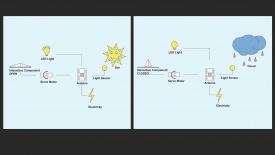
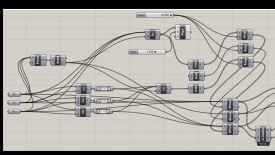
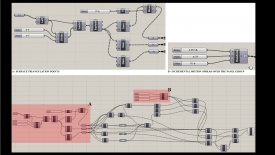
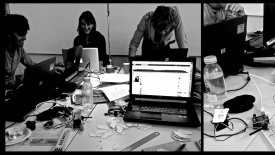

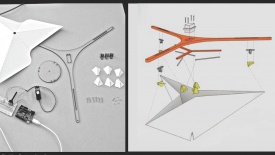
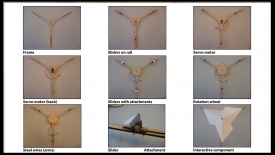
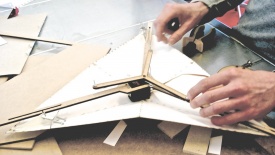
Gallery
